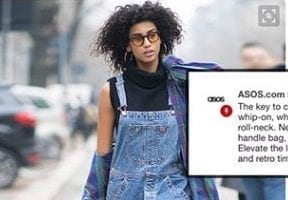Obtaining qualified leads is a challenge for many businesses. Social media can help, as consumers can discover brands that interest them. In this post, I’ll review examples of how ecommerce businesses are using social media to target prospects, build awareness, and gain leads.
Lead Generation on Social Platforms
Lead generation ad formats have been around for a while on Twitter and Facebook, and more recently on Instagram. Lead forms for these ads are built in, prompting the user for information without leaving the ad.
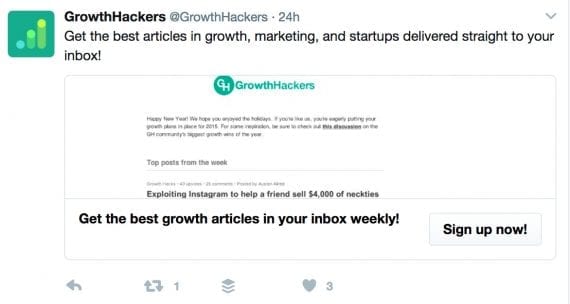
GrowthHackers, a training and consulting firm, allows new subscribers to enter their email address directly in this Twitter ad.
You can build lookalike audiences for Facebook and Twitter ads by uploading customer lists in each platform, to target similar consumers.
It’s important to test these ad formats. In addition to testing copy and images in a lead generation ad, consider testing ad formats, such as a native lead generation ad versus an ad with a compelling image or video. The example below is from Wantable, a fashion and fitness retailer, using a video to capture users’ interest to drive them to a landing page.
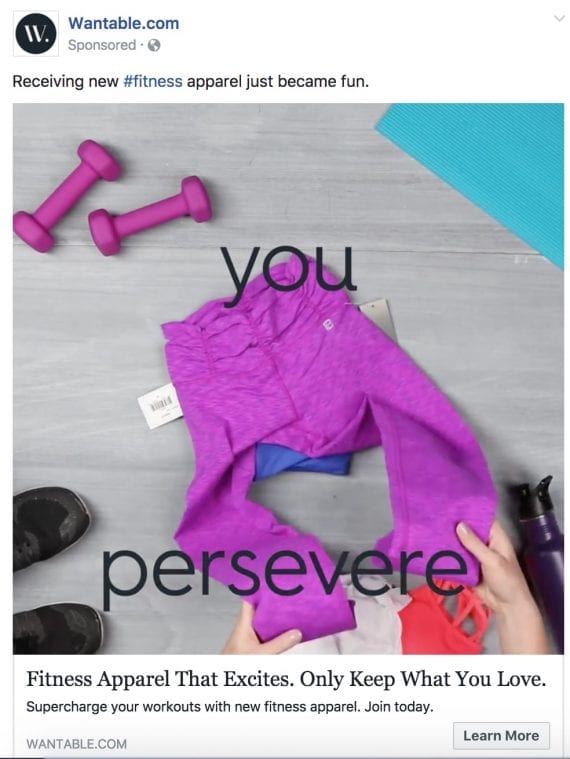
Wantable uses video in its Facebook ad to attract interest, to drive prospects to a landing page.
Offering something for free to drive user interest is worth testing. As an example, Brit + Co, a female apparel and lifestyle site, sells video classes and lessons to learn new skills. In the ad below, the company offers a free class to drive new customers.
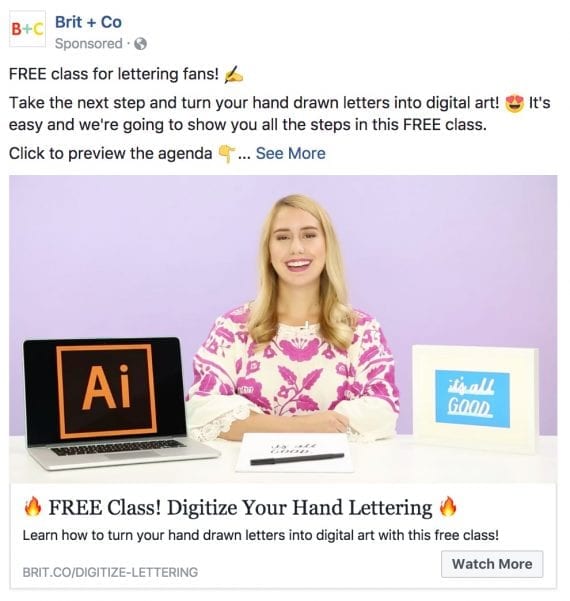
Using this Facebook ad, Brit + Co offers free classes to entice prospects.
For a more topical or keyword focused approach, many businesses use Twitter to build brand awareness and generate leads. Whether targeting competitors’ customers or replying to a user’s tweet, this tactic can drive prospects to a dedicated landing page. The example below from Green Chef, an organic food delivery company, uses tweets about trying new recipes to entice prospects.

Green Chef uses tweets about trying new recipes to entice prospects.
Pop-ups with a Social Twist
Website pop-ups, wherein users provide an email address to gain access to a discount, are standard for ecommerce retailers. But consider using these popups to give visitors the option to like or follow your brand’s social media accounts. Apparel retailer FlyPolar, for example, gives users two options to obtain a discount code: follow its social media channels or enter an email address. The functionality uses Beeketing, a marketing platform.
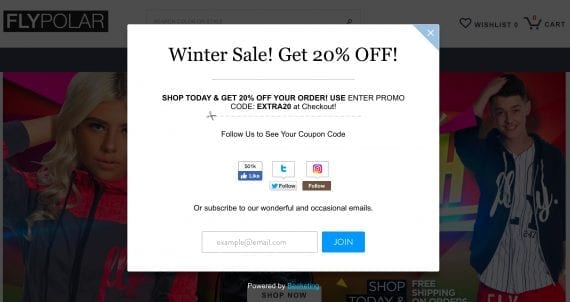
FlyPolar gives users the option to follow its social media channels or enter an email address to receive a discount code.
Refer a Friend
Refer-a-friend programs — incentivizing customers to send prospects — have been popular long before social media arrived.

Fashion retailer Stitch Fix promotes its refer-a-friend program across social media, Instagram in this example.
—
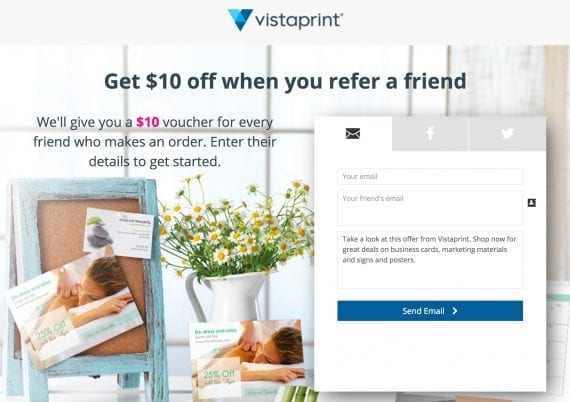
Vistaprint offers a $10 voucher on its website for each referral that produces a sale.
The challenge to ecommerce retailers for refer-a-friend programs can be lack of visibility, to ensure customers are aware. Retailers should include refer-a-friend programs across a many touch points, including email, on-site, social media, and packaging. For instance, Julep, a cosmetics retailer, includes a insert promoting its referral program in shipping boxes.

Julep promotes its referral program by inserting a flyer in shipping boxes.
Post-purchase Sharing
Encouraging customers to share their purchase on social media can increase awareness and leads. Retailer Know Style offers a discount on a future purchase to its customers that share on social media.

Know Style, a retailer, uses this display ad on its website for a discount on a future purchase for customers that share on social media.
If your site includes reviews or ratings, consider giving reviewers a discount or coupon code to share on their social media networks.
Sweepstakes and Giveaways
According to a Marketing Sherpa survey, incentives are one of the top reasons consumers follow brands on social media. My Pooch Face sells hand painted pet portraits and offers to visitors a contest for a free pet portraits.
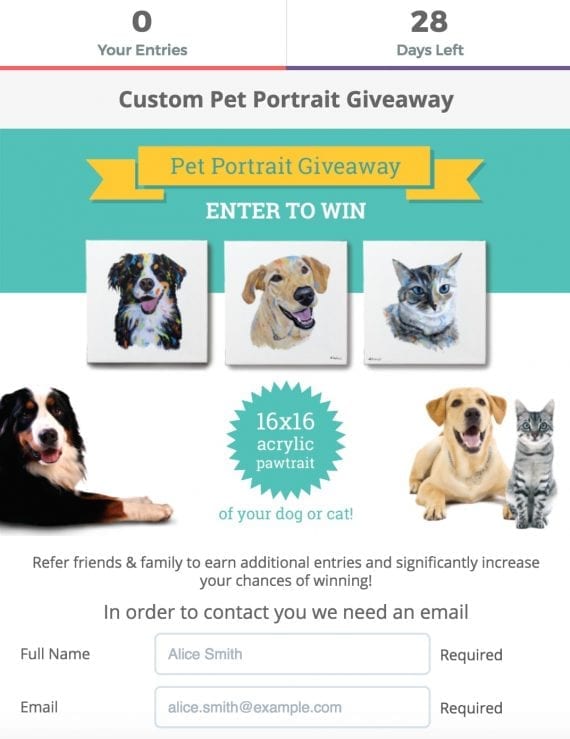
My Pooch Face grows its email list by offering — on its website — a contest for free, hand-painted pet portraits
—
Once entered, visitors are given additional entries into the sweepstakes by following social media profiles, referring friends, and signing up for email updates.
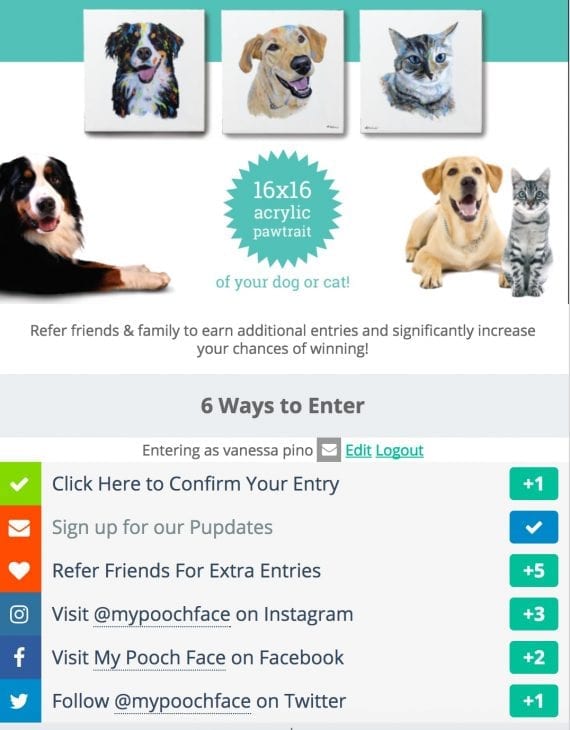
Visitors to MyPoochFace.com can obtain additional entries into a sweepstakes by following social media profiles, referring friends, and signing up for email updates.
—
Further, asking your social media audience to tag friends as a method of entering a contest can expand your brand’s awareness and reach prospects on social media.

Retailers can encourage their shoppers to tag friends on social media — such as this example from Twitter — as a method of entering a contest.


